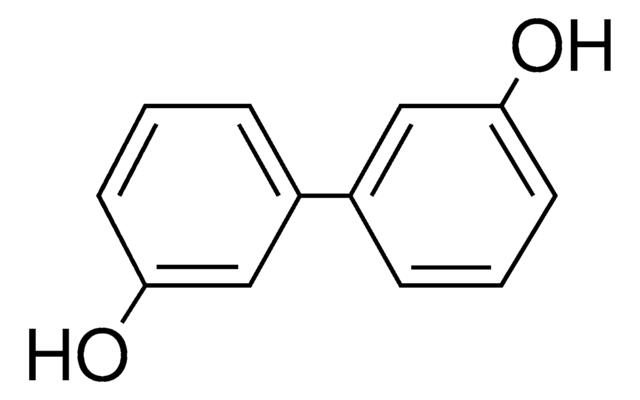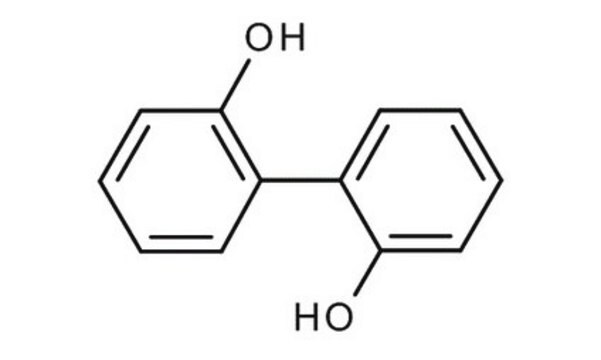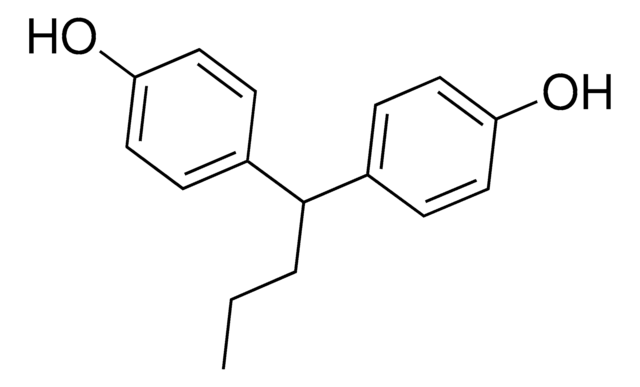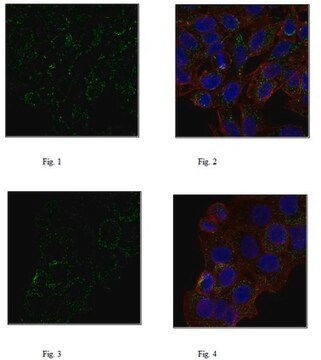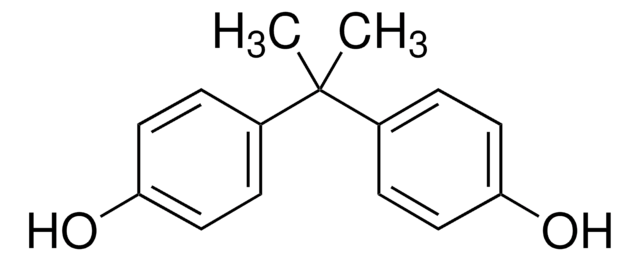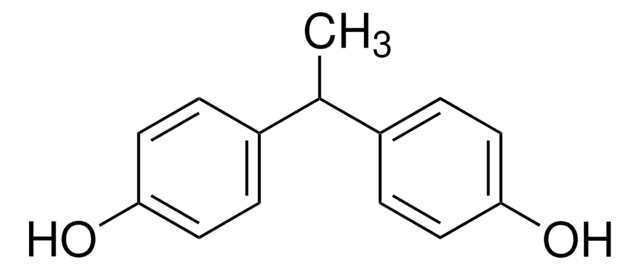115819
2,2′-Biphenol
99%
Synonym(s):
2,2′-Biphenyldiol, 2,2′-Dihydroxybiphenyl, 2,2′-Diphenol
Sign Into View Organizational & Contract Pricing
All Photos(1)
About This Item
Linear Formula:
HOC6H4C6H4OH
CAS Number:
Molecular Weight:
186.21
Beilstein/REAXYS Number:
1638363
EC Number:
MDL number:
UNSPSC Code:
12162002
PubChem Substance ID:
NACRES:
NA.23
Recommended Products
Quality Level
assay
99%
form
solid
bp
315 °C (lit.)
mp
108-110 °C (lit.)
SMILES string
Oc1ccccc1-c2ccccc2O
InChI
1S/C12H10O2/c13-11-7-3-1-5-9(11)10-6-2-4-8-12(10)14/h1-8,13-14H
InChI key
IMHDGJOMLMDPJN-UHFFFAOYSA-N
Related Categories
Storage Class
11 - Combustible Solids
wgk_germany
WGK 2
flash_point_f
309.2 °F - closed cup - (External MSDS)
flash_point_c
154 °C - closed cup - (External MSDS)
ppe
dust mask type N95 (US), Eyeshields, Gloves
Choose from one of the most recent versions:
Already Own This Product?
Find documentation for the products that you have recently purchased in the Document Library.
W A Prütz et al.
International journal of radiation biology and related studies in physics, chemistry, and medicine, 44(2), 183-196 (1983-08-01)
Phenoxyl radicals generated pulse radiolytically by the reaction of N.3 with Gly-Tyr decay biomolecularly (2k = 4.7 X 10(8)M-1 s-1) with efficient formation of 2,2'-dimers, which enolize rapidly (k = 2.7 X 10(4) s-1) to produce the 2,2'-biphenolic product. The
H P Kohler et al.
Applied and environmental microbiology, 54(11), 2683-2688 (1988-11-01)
Pseudomonas sp. strain HBP1 was found to grow on 2-hydroxy- and 2,2'-dihydroxy-biphenyl as the sole carbon and energy sources. The first step in the degradation of these compounds was catalyzed by an NADH-dependent monooxygenase. The enzyme inserted a hydroxyl group
T Kuhnigk et al.
Journal of basic microbiology, 37(3), 205-211 (1997-01-01)
The capability of the intestinal flora from the gut of xylophagous termites of degrading lignin model compounds was investigated. Different dimeric lignin model compounds-degrading bacteria were obtained from the hindgut flora of Mastotermes darwiniensis Froggatt, Reticulitermes santonensis Feytaud, Nasutitermes nigriceps
Alaa S Amin et al.
Spectrochimica acta. Part A, Molecular and biomolecular spectroscopy, 96, 541-547 (2012-07-07)
A solid phase extraction technique is proposed for preconcentration and speciation of chromium in natural waters using spectrophotometric analysis. The procedure is based on sorption of chromium(III) as 4-(2-benzothiazolylazo)2,2'-biphenyldiol complex on dextran-type anion-exchange gel (Sephadex DEAE A-25). After reduction of
M Sondossi et al.
Applied and environmental microbiology, 70(1), 174-181 (2004-01-09)
The purpose of this investigation was to examine the capacity of the biphenyl catabolic enzymes of Comamonas testosteroni B-356 to metabolize dihydroxybiphenyls symmetrically substituted on both rings. Data show that 3,3'-dihydroxybiphenyl is by far the preferred substrate for strain B-356.
Our team of scientists has experience in all areas of research including Life Science, Material Science, Chemical Synthesis, Chromatography, Analytical and many others.
Contact Technical Service